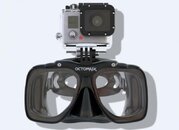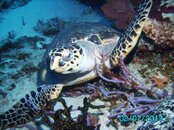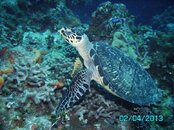PatW
Contributor
A lot of issues going on.
You can not fix color with post processing if you are shooting at depth. The longer wave lengths of light are absorbed in the water column faster than the shorter wave lengths. Virtually all of the red light is gone after you go below 15'. Once you are down at 70', you are in a blue and green world. To replace the full color spectrum you have to have a strobe, better yet 2, and get close to your subject. I have taken shots of subjects up against drab looking backgrounds. The background is often revealed in the photo with strobe as being a garish red and orange.
White balance is tricky underwater. You can set the white balance whilst shooting jpegs manually. I just shoot Raw so I don't have to mess with it. It is complex enough.
Focusing can be frustrating. Lenses like to focus on contrast. A lens wants to focus on the gravel rather then a smooth bodied fish. It is just a fact that you have to deal with. Pearly jaw fish with their pearly surface tend to evade focusing very well. Of course, lenses love to focus on scorpion fish.
For anyone even considering under water photography, I would suggest reading Martin Edge's Underwater Photography first. Also check out some of the excellent web sites on the subject: Wet Pixel, Backscatter and Reef Photo and Video among others.
You can not fix color with post processing if you are shooting at depth. The longer wave lengths of light are absorbed in the water column faster than the shorter wave lengths. Virtually all of the red light is gone after you go below 15'. Once you are down at 70', you are in a blue and green world. To replace the full color spectrum you have to have a strobe, better yet 2, and get close to your subject. I have taken shots of subjects up against drab looking backgrounds. The background is often revealed in the photo with strobe as being a garish red and orange.
White balance is tricky underwater. You can set the white balance whilst shooting jpegs manually. I just shoot Raw so I don't have to mess with it. It is complex enough.
Focusing can be frustrating. Lenses like to focus on contrast. A lens wants to focus on the gravel rather then a smooth bodied fish. It is just a fact that you have to deal with. Pearly jaw fish with their pearly surface tend to evade focusing very well. Of course, lenses love to focus on scorpion fish.
For anyone even considering under water photography, I would suggest reading Martin Edge's Underwater Photography first. Also check out some of the excellent web sites on the subject: Wet Pixel, Backscatter and Reef Photo and Video among others.








